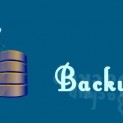XML integration with relational databases is an ongoing hot topic in the data management sphere for many years now. This is because as data continues to increase both in volume and complexity, the need for efficient and flexible storage and retrieval techniques becomes more pronounced. The future trends in XML and relational database integration are discussed in this article to give insights of what the changing trend looks like.
XML Schema Evolution
When talking about the integrity of the data, allowing seamless integration between Relational Databases (RDBs) and XML Data, it’s worth noting that the structure and constraints of XML schemas play rather critical roles. In order to remain compatible with RDBMSs while coping with these changes, the XML schema design has been modified.
One emerging trend is the adoption of more flexible and dynamic schema structures. These traditional rigid schemas have a drawback; they may not support fast evolving requirements on data. Therefore, researchers are looking at schema-agnostic approaches capable of providing greater flexibility when representing or storing information. These techniques employ machine learning algorithms coupled with intelligent schema inference mechanisms which can adjust themselves automatically based on the ingested data.
In addition to this, schema versioning and evolution strategies are also popular topics. Maintaining backward and forward compatibility with existing data and relational database structures has become very important as XML schemas evolve. Techniques that include schema diff and merge tools, automated schema migration processes, and version-aware query optimizers are being used to ensure seamless data transitions and minimize disruptions.
Hybrid Data Models
Relational databases have long been the standard for structured data storage; however, the advent of unstructured and semi-structured data has led to a new variety of hybrid data models, which attempt to combine the flexibility of XML with the structure and consistency of relational databases in order to enable more efficient data storage and retrieval.
A major example is an XML-enabled database where native support for XML is included in the Relational Database Management System(RDBMS). These systems can store as well as queries on XML-based information with traditional relational data structures making use of both designs’ advantages. Common features include dedicated XML indexes, optimized query processors, specialized functions for XML manipulation/transformation.
Another newly emerging trend involves integrating NoSQL databases, such as document-oriented databases, with relational databases. These hybrid architectures exploit the schema-less nature of NoSQL databases when storing and querying XML data but utilize the relational database for structured data management. The NoSQL database can store XML data in its native format, and techniques such as XML indexing and query optimization may be used to enhance its performance.
Cloud Computing Impact
The advent of cloud computing has revolutionized how data is stored, processed, and accessed today. In the case of XML-relational database integration, cloud technologies are driving significant advancements and reshaping space.
A trend you can notice is the rise of Cloud-native-databases that are designed specifically to take advantage of scalability, elasticity and cost-effectiveness offered by the cloud infrastructure. Most times these include built-in support for XML allowing seamless integration with relational databases running either on-premises or in the cloud.
Another important point is that serverless architectures are becoming famous in the space of cloud computing. At the same time, these methods will enable developers to write codes without thinking about any concerns related to provisioning or managing the underlying infrastructure.
From the XML-relational database integration perspective, these serverless functions can be utilized to do a number of things, such as data transformation, schema mapping, and query execution, which gives a more agile and scalable approach toward data integration.
AI and Machine Learning
AI and ML are disrupting multiple aspects of data management with an increasing effect on XML-relational database integration. Not to mention this also includes automatic XML convertors, which leverage the power of AI and ML. Sonra has covered all of the important info on this.
A promising application of this is intelligent data mapping and schema inference. Existing patterns, relationships, and mapping rules can be identified by training ML algorithms on previous XMLs and relational database schemas. This leads to faster integration of XML into relational databases with less manual effort, hence avoiding errors.
Furthermore, ways of optimizing the performance of XML-relational database queries using AI query optimization techniques are being explored. These systems can also adjust query plans, indexing strategies, and resource allocations to improve overall query execution times by analyzing query patterns, data distributions, and workloads.
You may also like – How to play XML content with PHP
Data Interoperability and Security
Given the increased uptake of XML-relational database integration, data interoperability and robust security measures require utmost importance.
In terms of data interoperability, industry standards and best practices must be followed.
Security concerns must be addressed to protect sensitive data and prevent unauthorized access or data breaches. Encryption techniques, access control mechanisms, and auditing frameworks tailored specifically for XML-relational database environments are gaining traction. Additionally, the adoption of secure data transfer protocols and secure XML parsing libraries can mitigate potential vulnerabilities during data integration processes.
Scalability Challenges
Scalability becomes a significant concern in XML-relational database integration projects as data volumes continue to grow exponentially. Efficiently managing and processing large-scale XML datasets while maintaining high performance and reliability is a complex undertaking.
One way of tackling the scalability issues is by adopting distributed computing frameworks and parallel processing techniques. By dividing XML data across multiple nodes or clusters, the computational load can be shared, thus making it possible for both the processing and querying of huge datasets to become more effective.
In addition, advanced indexing and caching strategies are being experimented with in order to improve query performance and minimize the overheads associated with repeated XML processing. Some of these techniques include XML-aware columnar storage, smart caching mechanisms, and result re-usage in queries among others that greatly enhance scalability of systems using XML relational databases.
Conclusion
The integration of XML and relational databases continues to be an area worth watching in the ever-changing domain of data management. Looking into the future, schema evolution, hybrid data models, cloud computing, AI and machine learning, data interoperability standards, and scalability solutions are becoming influential in how we store, retrieve, and process information.
To achieve new levels of data agility that bring about seamless integration between XML and relational databases, organizations need to embrace such emerging trends while making good use of cutting edge technologies. This will eventually translate to improved decision-making processes as well as better operational efficiency.




















